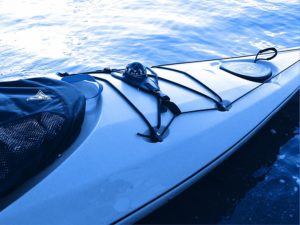 The compass is an ancient device, albeit one that is relatively advanced. One would think that picking a compass should, therefore, not be a problem at all, since the concept is ancient and primitive. After all, on the most base level, it’s just a magnetized needle that points to the north pole and rotates freely. Nevertheless, we can see a vast assortment of compasses on the market.
The compass is an ancient device, albeit one that is relatively advanced. One would think that picking a compass should, therefore, not be a problem at all, since the concept is ancient and primitive. After all, on the most base level, it’s just a magnetized needle that points to the north pole and rotates freely. Nevertheless, we can see a vast assortment of compasses on the market.
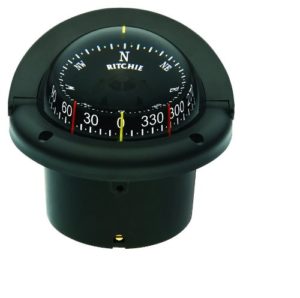
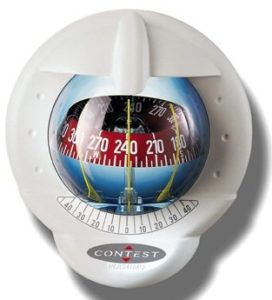
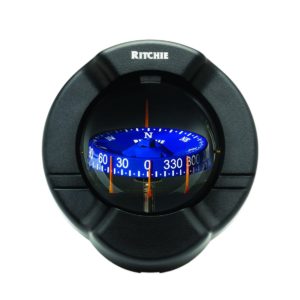
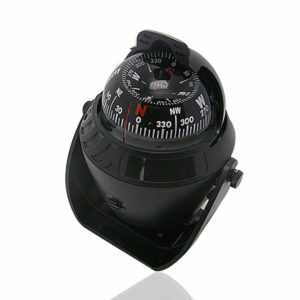
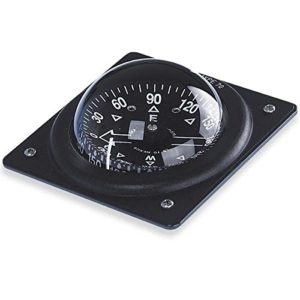
Top 5 Best Boat Compasses in 2019
1Ritchie Navigation Helmsman Compass — Best Bang for the Buck
This is a beautiful backlit compass that’s fit for mounting on a 4” mounting hole. The backlight is available, but it’s too dim for my tastes.
Other than that, it’s a pretty reliable compass that comes with 5 years of warranty. It doesn’t have any extra features, but as far as the essential functions go, it’s decent.
- Backlit compass
- Fit for mounting on a 4” mounting hole
- Pretty reliable
- 5 years of warranty
- Dim dial
2Nautos 64417 - Contest 101 Compass — Most Protected
I wouldn’t advise this compass for a smaller boat. It’s a good fit for larger vessels, starting at 26 feet. It’s watertight, and it’s scratch resistant and let’s not forget about backlight. By the way, the lightbulb is replaceable, which makes the compass just a bit more reliable.
It’s also UV protected, and it comes with a protective cover.
While the protection is nothing really major, it’s nice it’s present at all.
- Watertight
- Scratch-resistant
- Backlit
- Replaceable lightbulb
- UV-protected
- Protective cover
- Not a good fit for small boats
3Ritchie Venture Compass — Most Versatile
Another Ritchie compass, and it’s not too different from the other one. It’s not a good fit for smaller boats, but it’s water resistant, and it’s compatible with a 45-degree clinometer. The product description says it includes one, but that is not the case. You have to buy it separately.
Other than that, this is yet another good compass for larger boats, and it comes with an extended warranty and backlight.
- Water-resistant
- 45-degree clinometer compatible
- Extended warranty
- Backlight
- Compatible with a 45-degree clinometer
- Does not look good mounted on small boats
4Odowalker Black Marine Compass — Best for Small Boats
Now, if you want to mount a compass on your motorboat, this is a product for you. It’s small like that, and you can even install it on a truck’s dashboard if you really want to. But it won’t be comfortable to use on large boats.
The point is, the compass is a good fit for boats under 26 feet in length.
It’s durable, and it’s backlit. You can also replace the lightbulb if you wish. Not that it’s critical in any way.
- You can also replace the lightbulb
- Small
- You can even mount it on a truck’s dashboard
- A good fit for boats under 26 feet
- Won’t be comfortable to use on large boats
5Brunton - Dash Mount Compass — Best Dash Mount
Yet another mini-compass. You can flush-mount it on a kayak, and it’s going to look good. What’s more important, it’s a perfectly functional compass that can give you all the readings you need. It’s not an all-purpose compass, meaning that you can’t mount it in your car quickly, but it’s a good fit for a boat. You can mount it on a vertical bulkhead if you want.
It’s accurate, it’s functional, and it’s sleek. As far as compasses go, it’s a good choice, and for a reasonable price, too.
- You can flush-mount it on a kayak
- Perfectly functional compass
- You can mount it on a vertical bulkhead
- Sleek
- Not an all-purpose compass
Buyer’s Guide
Water Resistant
Naturally, a boat compass must be waterproof. Not all compasses are like that, many of them are made for people or for cars. Water resistance is not an important feature. But, of course, if you are going to use such a compass for fishing, then you will end up unhappy, even if you are not trying to mount it on the boat.Reliability and Accuracy
Such a question shouldn’t arise at all. However, cheap compasses can’t provide any serious reliability too often. As a rule, such compasses are souvenirs, and they are not intended to accurately point to the north, even though they can do it more or less correct. But they are not accurate. The needle may be unable to rotate freely, and it can be pointed to nearby magnetized metal instead. Also, if such a compass is tilted, the needle may get stuck and will not turn in the direction of the north at all. Considering that any boat rocks and it’s normal, rather than phenomenal, the needle of such a poorly made compass will get stuck every now and then. You need a reliable compass that cannot be disturbed by rocking and which, at the same time, is reasonably accurate.Backlight
To navigate at night, it is critical that the compass be visible regardless of whether it is lit or not. Therefore, either its dial should be backlit, or all the marks and the needle should glow. Both options have advantages and disadvantages. A backlit compass depends on a power source. A glowing compass will be visible regardless of whether a backlight is available, but it is not going to be very bright and well-visible.As for the hybrid options, they lack the typical disadvantages of both types.Readability
The readings of the device should be, well, readable, and if it is hard for you to understand the dials and degrees, it will make sense to buy an electronic device. Nevertheless, I advise that you learn to read analog compasses anyway. If you want to have some navigation skills, you need to learn them. Otherwise, you may end up having no idea about what you should do with the compass.Size
Most people far from sea-faring, believe for some reason that almost all compasses are small. That is not the case, and that is especially not the case with gyrocompasses and similar devices.The compass must be mounted, so it is visible, and it should not interfere with the management or movement of the boat. Also, if you purchased a magnetic boat compass, then you should take into account the proximity to metal objects when mounting it. The distance between the compass and any metal objects must be at least 3 ft.Mount
The mount is an essential factor that determines the placement of the boat compass. For the most part, a standard dashboard mounting hole is perfect. The 3 ¾ mounting hole fits most anglers.Of course, if you have an inflatable boat, you simply have nowhere to attach a stationary compass. It would be better to use either a tourist compass or any other handheld compass.Price
There are many types of compass, some of them very expensive. You don’t necessarily need all their features. It’s better to choose compasses that are high-quality but, at the same time, do not cost too much.Types
A boat compass is a navigation device used to confirm the current course or to identify deviations from a given direction. You can also use a compass to determine the direction of the wind and the drift of the boat. Usually, the compass is mounted so that it is in the field of view of the helmsman, but its readings should not be distorted by interference from adjacent devices.Innumerable modifications of boat compasses exist, but there are only a few more general categories. Let us consider each of them in more detail.Magnetic Boat Compasses
Magnetic boat compass works on the same principle as a standard generic compass: the magnetic needle is aligned along the line that points to the north and south. But the appearance and internal structure of the device is different from a typical handheld compass. A boat compass often has a hemispherical shape and, thanks to that design, the device can compensate for pitching and rolling.The case of the device is covered with a convex glass with a dial underneath, and the dial also rotates to compensate for magnetic distortions. The space between the dial and the glass is filled with a liquid, as a rule, a non-freezing mixture of alcohols. That liquid is required because the rotation of the dial lags behind the rotation of the needle otherwise.Magnetic compasses have been used for a long time, and they are popular with sailors to this day. Large vessels have at least 2 compasses mounted.Electronic Boat Compasses
The design of electronic boat compasses employs magnetic sensors, but the readout of such devices are more accurate than those of magnetic compasses. Electronic devices are not subject to interference from neighboring metal objects and do not react in any way to pitching and rolling. An electronic compass is also easier to read because it has a digital readout.Satellite Compasses
Satellite compasses use GPS to get the direction. They are not at all dependent on the magnetic field of the Earth and are highly reliable when there’s a lot of magnetic interference. At the same time, they rely on the GPS signal and a power source.Gyroscopic Compasses
Gyrocompasses point to the physical north pole, rather than the magnetic one. Therefore, interference from magnetic “neighbors” is not non-existent to such a compass. They are mechanical tools that use the principle of a gyroscope. They are based on a rotating flywheel mounted in a gimbal suspension and adjusted for a constant return to the north pole.How to Care for the Boat Compass
- Ensure that there are no interferences from nearby metal objects. Once again, the distance between the compass and the nearest metal object must be at least 3 feet.
- Wipe the device’s housing and glass daily to prevent contamination that interferes with the reading of the compass.
- Shield the compass from sharp shocks and strikes. Otherwise, they can knock down the adjusted oscillations of the needle, or even disable the device altogether.
- Do not operate the device in improper conditions.
